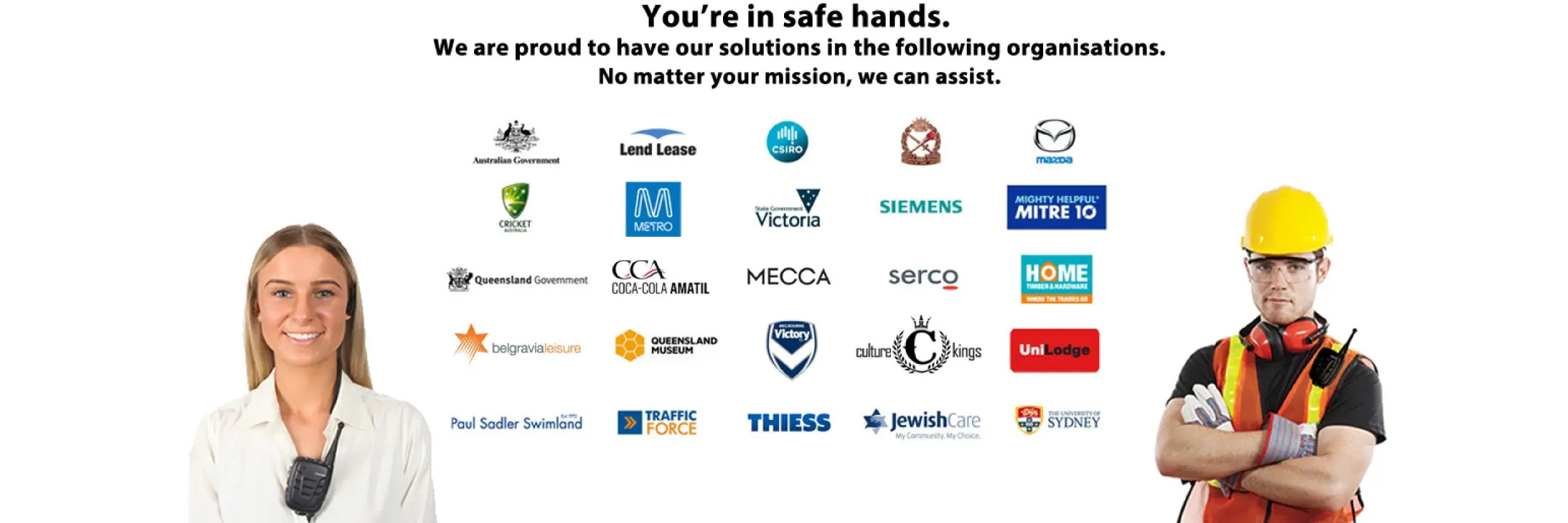In this article, we explore everything you need to know about VOX mode, how to set it up correctly, VOX's technical limitations and its alternatives that can enable hands-free communication with a two-way radio.
- VOX mode for "hands-free" radio communication?
- What is VOX mode?
- How to setup VOX mode.
- The limitations of VOX mode.
- What are the alternatives to VOX mode?
- Icom's game changing "full duplex" IP740D
VOX mode for "hands-free" radio communication?
Many workers whose jobs require them to operate heavy machinery, with joysticks, steering wheels or other tools with buttons, particularly in the construction industry, will need to keep both hands on the machinery at all times to ensure they handle it with absolute safety & precision. These workers "on the tools" often face the challenge of communicating hands-free over their two-way radio system. There are various ways to achieve hands-free communication with a two-way radio system. VOX mode is one of them.
What is VOX mode?
VOX means "Voice Activated Exchange/Transmission". When a two-way radio, headset or wireless device has VOX mode enabled, the user can turn the radio device's microphone on/off using their voice.
In theory, VOX mode may appear to be an answer to enabling hands-free communication using two-way radios. However, in real-world operating environments, VOX mode has various factors and limitations that you should consider before considering it the "solution" to achieving hands-free communication, as I discuss below.
How to set up VOX mode.
To set up VOX mode, you must first fine-tune the VOX mode's audio sensitivity setting according to the current audio in the work environment you are within and with consideration for the noise-cancellation abilities of the microphone of the audio accessory that is attached to your radio.
We do not recommend using VOX mode with a remote speaker microphone, lapel microphone & earpiece, or any other audio accessory where the microphone is not close to the user's lips.
You should only consider using VOX mode with your two-way radio if you have an appropriate, purpose-built headset with a noise-cancelling microphone. The headset's microphone should nearly touch the user's lips, so the user does not have to shout into the microphone and minimise the chance of background noise being heard.
Adjust the VOX setting so that the radio only transmits when the user talks at an average volume and so the microphone does not pick up background noise, including the radio user's breathing. Consequently, VOX mode should be readjusted for each audio environment and user's style of communciation accordingly.
The last recommendation on how optimise VOX is, as a team, agree on the first word you will state into the microphones in every command you give. This will be the first word used to trigger the microphone and transmission to occur using VOX, but may be cut off in transmission. For example, if you only stated on the VOX headset "Don't shoot!", the word "don't" may not be broadcast, and your team's recieving radios will instead only hear "shoot!", which could have disastrous consequences. Therefore, when using VOX headset, always say a initial word like "Team name, don't shoot!" to ensure your intended message is accurately brodcast.
The limitations of VOX mode.
The challenge to successfully using VOX mode is that it typically performs poorly in dynamic, high-noise audio environments.
For example, suppose you are working in an environment with unexpected loud noises and the radio user is provided with a headset containing a "boom microphone" without noise cancellation features.
Suppose the VOX setting is too sensitive for the user, audio environment and supplied headset. In that case, background noise (including the user's breathing) may trigger the transmission of the radio unintentionally to all the other radio users.
As UHF radios work on a "push-to-talk" basis, only one user can talk at a time. Therefore, in the above scenario, while the radio user's background noise is, unintentionally, broadcast on the radio channel, it will prevent all the other UHF radio users from being able to communicate on the channel until the background noise ceases on the responsible radio.
You can imagine how annoying it will quickly become for the team if everyone's radios are broadcasting, someone else's background noise, whilst they are not talking, and no one can use the channel.
VOX mode, when not set correctly for the audio environment, lack of user training or when used with an inappropriate headset, will destroy team productivity, defeating the purpose of using two-way radios to communicate in the first place.
The best way to mitigate the potential limitations of VOX mode is that workers must also be issued with purpose-built headsets for use in high-noise audio environments. 3M Peltor Hearing Protection headsets are renowned for their best-in-class performance in high-noise industrial environments.
3M Peltor headsets allow the user to set the radio's VOX sensitivity level accurately. Peltor headsets, whilst not inexpensive, are the "go-to" headset solution used by military forces worldwide for combat situations. If you have succeeded with alternative brands of headsets and want us to stock them, please let us know in the comment section below.Workers without the budget for Peltor headsets might also consider using throat or ear microphones to minimise the possibility of the radio's VOX mode being activated. However, in our experience, the audio quality of throat microphones is typically very muffled and needs to be clearer to be used in a high-noise work environment.
In summary: we only recommend only using VOX mode in a high noise / dynamic audio environment if the radio is combined with a compatible 3M Peltor Headset, and optimised accordingly. It also requires some user training.
What are the alternatives to VOX mode?
The alternative to using VOX to achieve hands-free communication is a communication system with full duplex mode. "Full duplex" means everyone can talk & listen simultaneously on the same channel. You don't need to wait for your turn to talk; everyone can speak freely, like a telephone conference call or Zoom meeting.
Full duplex, "party chat" communication headsets have historically been limited to a short talk distance. They usually operate on licence-free, 2.4GHz radio spectrum, making them suitable for theatre production and television broadcasters but not for outdoor, industrial users.
The growing need for a VOX alternative that enables hands-free communication in a two-way radio, has likely prompted world-class radio manufacturer, Icom to release the innovative IP740D radio to the Australian market.
Icom's game changing "full duplex" IP740D
The Icom IP740D enables radio users to communicate on UHF and 4G LTE, channels. Whilst using an LTE channel, the IP740D radio offers both full duplex mode & PTT mode! Likewise, the user can simultaneously listen to their UHF radio channels in bridge mode.
The Icom IP740D is a seriously game-changing, two-way radio solution that genuinely addresses the needs of workers, requiring hands-free communication. This latest innovation from Icom should seriously excite all heavy machine operators, concrete cutters, tree cutters, fork lift drivers, OH&S representatives, and any other industrial user that needs to keep their hands on the tools at all times.
If you are looking for an alternative to VOX, and need a proper, hands-free communication system for your work team, don't hesitate to contact us and ask about the Icom IP740D. We will be more than happy to assist.
About the author
Ari Adar is the General Manager of Radio Warehouse and has over 15 years experience in the business critical telecommunications industry. He is passionate about helping business teams communicate with powerfully simple technology.
















